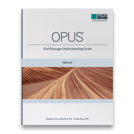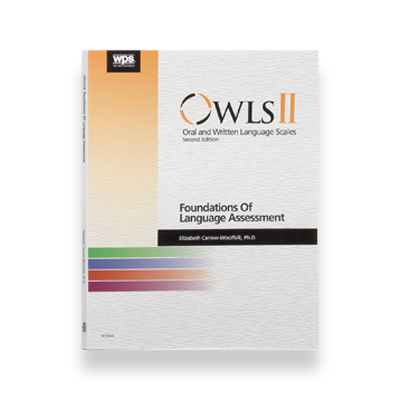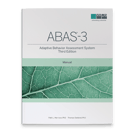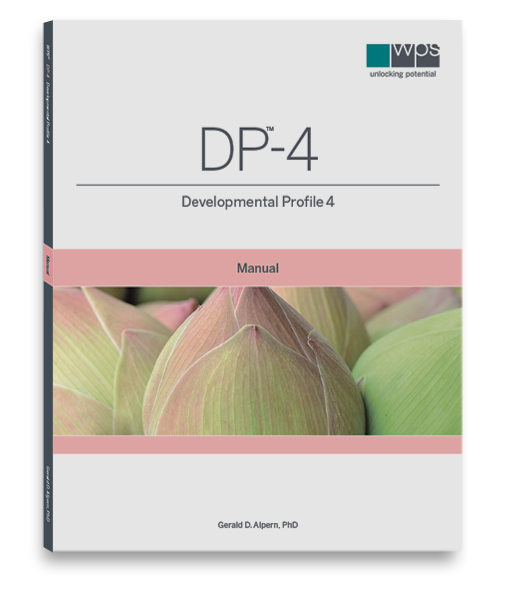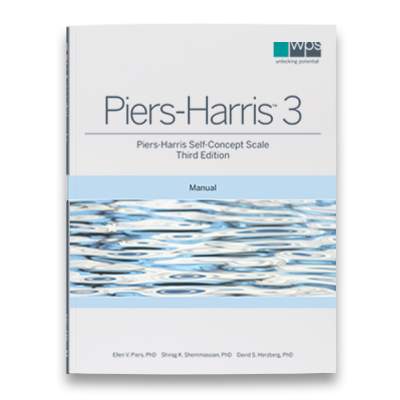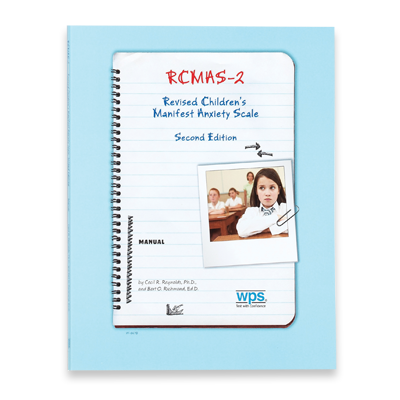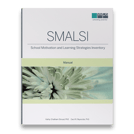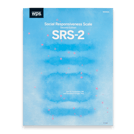Assessment Telepractice Overview
The well-being of you and your clients and students remains at the forefront of our concern during year two of the pandemic. As more students return to school, we’ve updated this list of free resources to help you navigate this transition, no matter how you are conducting evaluations.
You are invited to read the WPS:
- Remote Assessment Guidelines
- Statement on Tele-assessment
- Assessment Validity Considerations During COVID-19
Need tips and advice?
Watch recorded webinars from our knowledgeable and trusted WPS Assessment Consultants.
Self-Regulation and Coping Across the Life Span Using the Sensory Processing Measure, Second Edition – Douglene Jackson
Online Assessment Tools Every Practitioner Needs for Telepractice – Ashley Arnold
OT Assessment via Telehealth – Douglene Jackson
WPS Online Evaluation System from Start to Finish – Stephanie Roberts & Salvadore Velasco
Remote or In-Person: Evaluate and Monitor Students’ Development Using the New DP-4 – Stephanie Roberts
Resources for Returning to School
ASHA: Resuming Services in School During COVID-19
10 points to consider for SLPs and audiologists who work in schools
ASHA: 10 Ways Children with Language Disorders Can Maintain Both Physical Distance and Social Connection
Physical distance doesn’t have to mean social distance – even for children with language disorders
ASHA: School-Based SLP Resources for Physical and Virtual Reporting
Resources to help you navigate personal safety, return to in-person services and/or telepractice, and share important information with parents
NASP: Resources and Guidance for Your Return to School
Suggestions for local education agencies and schools planning re-entry following COVID-19 closures
NASP: Considerations for Academic Assessments and Interventions upon Return to School
What to expect when many students return to school with increased social–emotional and mental health issues
AOTA: Back-to-School Resources During COVID-19
Practical suggestions for parents, guardians, caregivers, administrators, teachers, para-professionals, and students to navigate this challenging, upcoming school year
APA: COVID-19 Information and Resources
Resources and information for psychologists, health care workers and the public
More information:
Resources for Families
Resources to assist parents and students with questions about mental health, community mental health options, and special education programs and services
More Parent Resources for School Closure
General recommendations for parents supporting social, emotional, and behavioral needs
ASHA: Telepractice Resources During COVID-19
Resources and what you need to know to provide telepractice services
Temple Grandin’s 7 Tips to Help Our Loved Ones with Autism During This Global Health Pandemic
The autism expert’s advice recognizes that children and adults with autism often have difficulty adjusting to changes, surprises, transitions, and disappointments
Setting Yourself Up for Success: Preventative Self-Care for Practitioners
A list of 6 self-care tips to help you stay resilient as you face the next wave of challenges brought on by the pandemic
NASP: Countering Coronavirus Stigma and Racism: Tips for Teachers and Other Educators
Helpful handout with 14 specific tips and resources
APA: Psychologists’ Advice to Newly Remote Workers
Advice from I/O psychologists on how both managers and employees can work more effectively during this time
Professional Guidelines Focusing on Telepsychology and Internet-Based Therapy
Resources to help therapists, counselors, and other clinicians keep up with changes in the areas of telepsychology, telehealth, and Internet-based therapy
APA: Telepsychology Best Practices
Introductory webinar on key research that provides strong evidence-based models for psychological assessment and treatment
For more information on meeting students’ social–emotional needs, visit the WPS SEL page for resources and assessments.
FAQs: Assessment Telepractice
We’re addressing questions from you and your colleagues as they come in.
Can I administer a direct in-person measure remotely?
The assessments were not standardized in this way, and you should use your clinical judgment to carefully consider how any necessary adaptations will affect the results. Here is the WPS statement on tele-assessment and WPS remote assessment guidelines. You can also read the WPS Assessment Validity Considerations During COVID-19.
What do I need to assess from home?
Whether you have a PC or Mac, you’ll need an understanding of national and state guidelines as well as familiarity with video conferencing. Here are links to professional organizations on getting started: ASHA, NASP, AOTA, and APA. You can also view the WPS remote assessment guidelines for information on testing environments, preparations, and other considerations and requirements.
Are the standards for assessing remotely changing amid the COVID-19 pandemic?
Yes, states are allowing for an expanded use of telemedicine and telehealth services. Practitioners should review their local and state guidelines.
What other assessments can I use to evaluate someone remotely?
You can administer and score the following products, which require no adaptations for remote administration, via the WPS Online Evaluation System: ABAS-3, DP-4, Piers-Harris 3, RCMAS-2, RISE, SCQ, SMALSI, SPM, SPM Quick Tips, SPM-P, SPM-P Quick Tips, SRS-2, SPM-2, and SPM-2 Quick Tips.
For performance tests, do you have data comparing remote administration vs. in-person administration?
Yes, a recent study compared performance on the Clinical Assessment of Pragmatics (CAPs) using remote administration vs. in-person administration, and the results suggest that test scores obtained through administering the CAPs remotely are equivalent to test scores obtained through standardized, in-person administration.
Another study compared performance on the Comprehensive Assessment of Spoken Language, Second Edition (CASL-2) using remote administration vs. in-person, and the findings support the validity of remote administration, suggesting that both methods of administration should yield similar results.
Can I administer the ADOS-2 remotely?
The ADOS-2 requires administration by a trained examiner who is in the same room as the examinee and in close contact, interacting with the same materials. As such, it is not possible to validly administer this assessment remotely. Administrations of the ADOS-2 should be delayed until it is possible to resume in-person contact. Specific to Module 4, although this module is less reliant on toys and materials than the other ADOS-2 modules, it still has required tasks that utilize materials, and the focus is still on the social interactions between examiner and examinee. Remote administration would require modifications to standard procedures, and such modifications are not recommended, as they are likely to change the social “press,” will limit the scope of observation, and may not produce valid results consistent with published research. Any administrations conducted in this manner should be for qualitative purposes only, and algorithms should not be used.
During COVID-19, can I validly administer the ADOS-2 while practicing social distancing and/or wearing personal protective equipment?
The ADOS-2 is used by a variety of professionals in many different practice settings around the world. As such, any given professional using the ADOS-2 during COVID-19 should review current practice guidelines for their area and recommendations from their local department of health and credentialing agencies to determine whether a standardized ADOS-2 administration can be conducted in their setting at this time. Standardized administration of the ADOS-2 involves close contact and the use of shared materials. The focus of the assessment is on the social interaction between examiner and examinee, and maintaining an unusual physical distance for a social interaction and/or wearing a face mask/plastic face shield may change the nature of that social interaction in a variety of ways, such as by interfering with establishing rapport and obscuring facial expressions and spoken language. Data supporting the validity of the ADOS-2 are all based on administrations in which examiners engage with examinees without physical barriers and with a variety of physical distance depending on the specific activities being administered. The extent to which any specific variation to standardized procedures may impact the validity of an ADOS-2 assessment is an empirical question and will likely depend on aspects of the specific administration. For example, it is likely to be easier to follow standardized administration procedures while maintaining some physical distance for administration of Module 4 than for the Toddler Module. Any variations from standard procedures should be noted in the evaluation report. Depending on the extent of variation, it may be preferable to report qualitative observations in lieu of formal scoring.
Do you offer remote training for the ADOS-2?
To view our upcoming schedule, please click here. Other options include the ADOS-2 Training Video Program (LMS-605), the equivalent of the 2-day live training, with instruction in all five ADOS-2 modules. Please, keep in mind that if you plan to use the ADOS-2 in research, you must attend an in-person training.
During COVID-19, can I use ADOS-2 activities in a nonstandard way to facilitate qualitative behavioral observations?
Conducting a standardized ADOS-2 evaluation during the current pandemic may not be possible. As such, many professionals are wondering whether the ADOS-2 activities can be used in a nonstandard way to facilitate qualitative behavioral observations during this time. No special permissions are needed from WPS to conduct nonstandard administrations, so long as original materials are used as provided by WPS (without any reprinting, digitization, translation, adaptation, etc.). In this situation, we recommend writing up the results by acknowledging the nonstandard nature of the administration. For example, the clinical report could state that an attempt was made to administer ADOS-2, but all criteria for validity were not met (describe the nonstandard administration that was conducted and why); then state that because of the nonstandard administration, formal scoring was not completed, and instead, qualitative observations were made from tasks that were administered (the tasks and the behavioral observations can then be described).
What is the BOSA, how can I access it, and how does it relate to the ADOS-2?
The BOSA (Brief Observation of Symptoms of Autism) is an experimental measure created by and available through Dr. Catherine Lord’s research team to accommodate ADOS-2 users during COVID-19. The BOSA provides a context of activities that can be presented by an examiner (e.g., caregiver, therapist) within a 12–14-minute observation. It can be observed live, through telehealth, or on recorded video. ADOS-2 coding is then applied to the observation, and a checklist is completed to indicate evidence of symptoms of autism. This experimental measure is being designed for clinicians and researchers with sufficient training and experience using the ADOS-2 who are seeking an alternative to the standardized ADOS-2 at the present time. Though WPS is facilitating the authors’ arrangements related to the BOSA, all questions about use and permitted access should be sent directly to the authors at the following address: makingbettermeasures@gmail.com.
Can I assess someone remotely using the ADI-R?
While it is possible to conduct the ADI-R over a telephone or videoconferencing system, this particular method of administration has not been specifically validated. If necessary to conduct remotely, we recommend using a secure videoconferencing platform, in order to set up the administration to mimic face-to-face contact as much as possible. It is also important to keep in mind to not rush the administration and to help families participate with minimal distractions. The quality of information obtained will depend on the quality of the clinical interviewing process, so it is essential that elements of rapport be maintained during a video call just as would be the case in person. Remote administration is not ideal and should be viewed as a temporary solution until standard practices can be resumed.
Can I validly administer the MIGDAS-2 while practicing social distancing and/or wearing personal protective equipment? How about administering it remotely over a secure videoconferencing platform?
The MIGDAS-2 process uses sensory materials, conversation, and a visual framework to help evaluators gather and organize the qualitative information needed to diagnose autism in children, adolescents, and adults. This process includes guidelines for gathering information from parents/caregivers and teachers and for conducting a sensory-based interview with the individual being evaluated. The interview is intended to be an interactive and dynamic social interaction. As with any social interaction, maintaining an unusual physical distance and/or wearing a face mask/plastic face shield may change the nature of that social interaction in a variety of ways, such as by interfering with establishing rapport and obscuring facial expressions and spoken language. In this sense, the MIGDAS-2 interview may be impacted by social distancing and personal protective equipment. Although the interaction itself may be affected, the evaluator may still be able to make informed observations and gain useful qualitative information from the interaction. In addition, the questionnaires can provide information from the point of view of parents/caregivers and teachers to consider alongside the interactive evaluation.
The MIGDAS-2 materials can be particularly useful as a guide to conducting the parent and teacher interviews through a secure videoconferencing platform. The process can also help guide a virtual interview conversation with the individual being evaluated. With school-aged, verbally fluent children and adolescents, for example, the virtual conversation with the child and parents in their home setting can start by having the child share interests and show favorite items they have with them at home. Children often show materials that have distinctive sensory properties, allowing the evaluator to share an exchange related to the child’s areas of preferred interest and observe the child interacting with preferred materials.
This type of shared, object-focused exchange between the evaluator and child is generally not possible during a remote observation for children with limited to no verbal fluency; however, the MIGDAS-2 protocol can still serve as a useful guide for observing the nonverbal child within his or her familiar environment, with access to preferred objects. For example, social communication features that are consistent with ASD can be readily observed during the child’s interactions with his or her parents who are present remotely, and with siblings if they are there as well.
A MIGDAS-2 virtual interview conversation works well with adults being evaluated. Because the adult interview includes sensory information currently and by history, the lack of in-person access to sensory fidgets is not as limiting as it is with children and adolescents. During the conversation, the evaluator can observe routines that may be displayed with body movements, use of objects, and thematic topics of interest.
While the results of all evaluations with any assessment measure should be interpreted with care during the current pandemic, and it’s important to specify the conditions under which diagnostic information is gathered, the qualitative focus of the MIGDAS-2 allows the evaluator to gather the necessary information to begin the process of recognizing neurodiversity without emphasizing diagnostic terminology. The information gathered through the MIGDAS-2 process helps the evaluator consider all sources of available information (e.g., observations, rating scales) and facilitates writing a narrative evaluation report that describes useful treatment recommendations. These recommendations include identifying brain-style strengths and differences, coaching the development of necessary skills, introducing positive supports, and providing individualized tools to address regulation, organizational, and social/emotional needs.
If you don’t see your questions answered, please submit your question below.
Already Familiar with Telepractice?
WPS has a wide range of online products that may be appropriately used for telepractice under certain conditions.
Please keep in mind that local laws and regulations apply and must be considered first in each case.
The WPS Online Evaluation System:
- Increases clinical efficiency
- Is HIPAA/FERPA compliant





